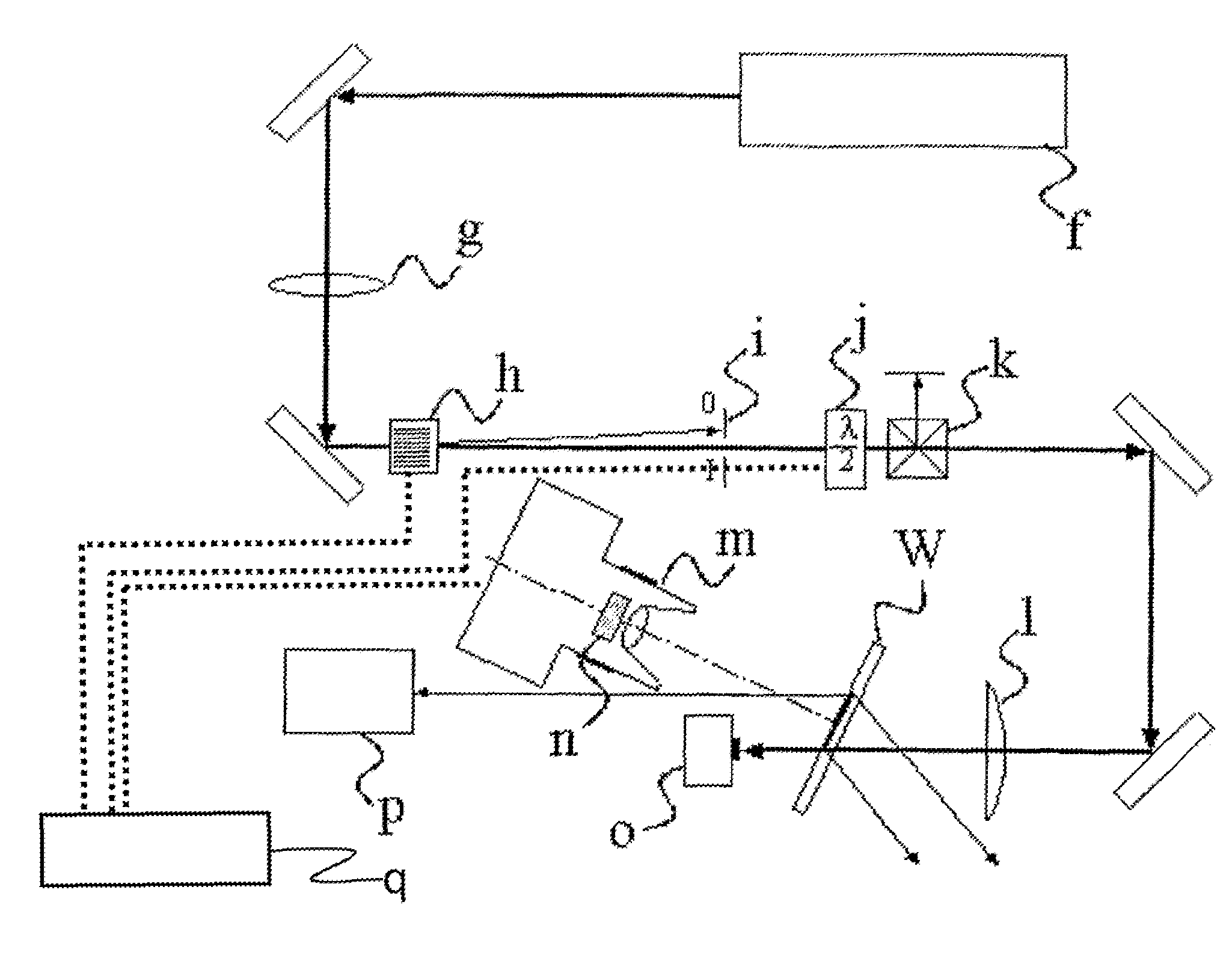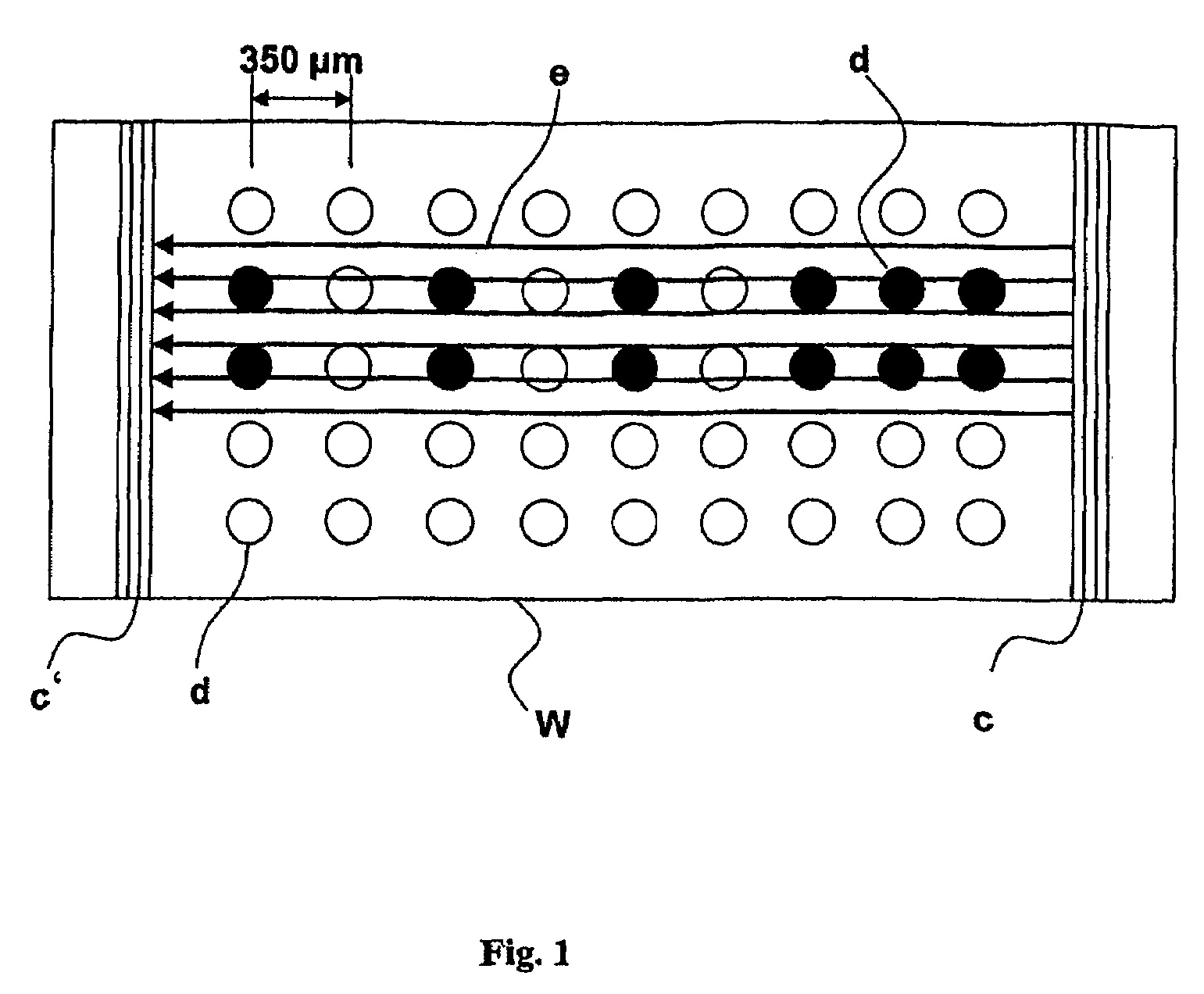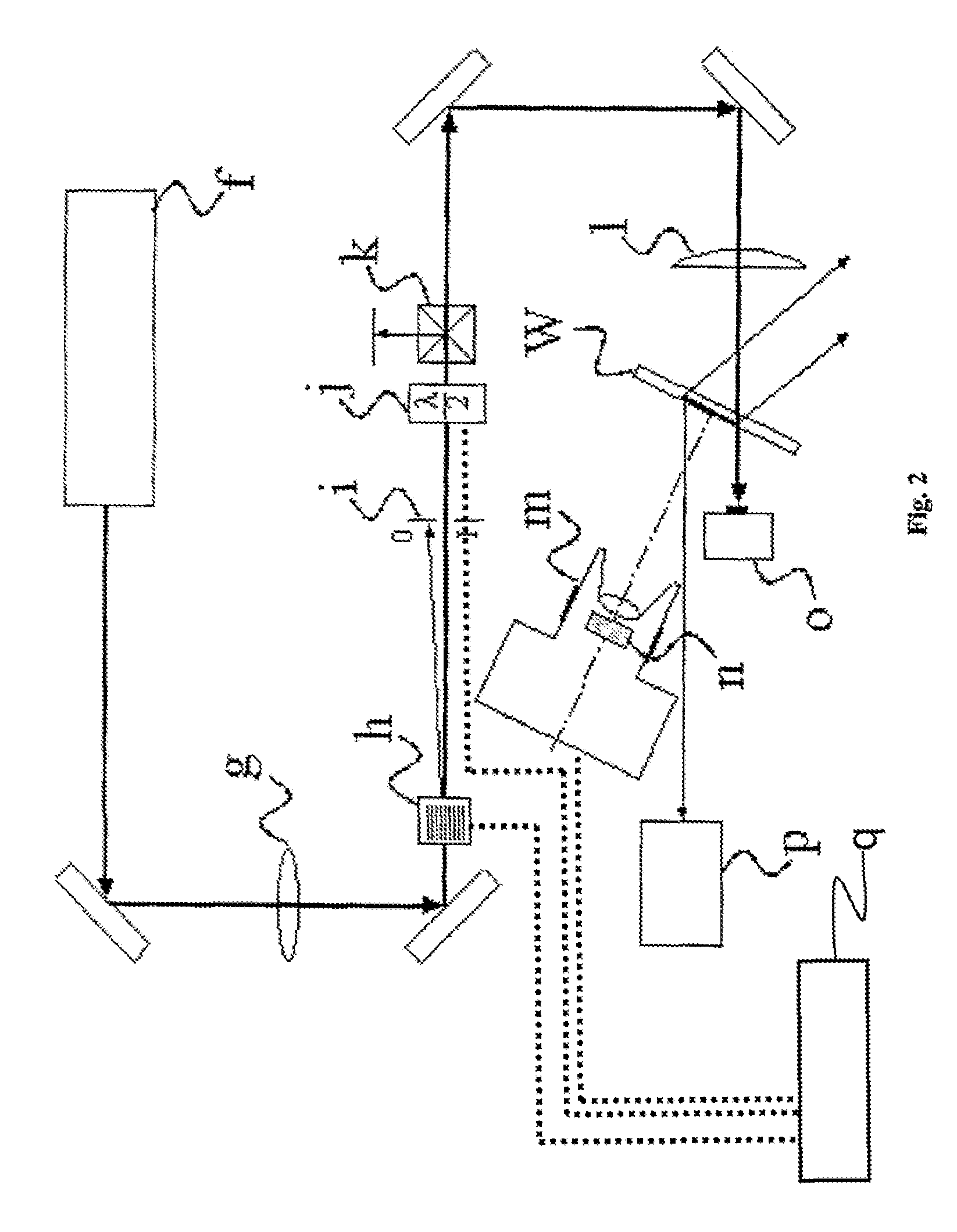Analytical system and method for analyzing nonlinear optical signals
an analytical system and nonlinear optical technology, applied in the field of biochemical analysis, can solve the problems of long time expenditure for the read-out of a large array, one sample is analyzed, and complicated washing or cleaning steps are continuously required
- Summary
- Abstract
- Description
- Claims
- Application Information
AI Technical Summary
Benefits of technology
Problems solved by technology
Method used
Image
Examples
examples
[0096]An analytical system according to the invention comprises an interaction space in accordance with the abovementioned definition, in which it is possible to generate response signals that are correlated nonlinearly with variations of an excitation light radiated in, an optical system for the excitation and detection (by means of a one- or two-dimensional detector array) of said response signals, a computer to which the detector signals are transmitted and stored in a data matrix and with the aid of which the measurement data are then split—according to a specification according to the invention—into their portions that are differently correlated with the excitation light.
[0097]A method according to the invention comprises the use of an analytical system according to the invention for generating and detecting response signals that are correlated nonlinearly with an excitation light in an interaction volume as defined above, and the splitting of the recorded measurement data acco...
PUM
| Property | Measurement | Unit |
|---|---|---|
| emission wavelengths | aaaaa | aaaaa |
| emission wavelengths | aaaaa | aaaaa |
| diameter | aaaaa | aaaaa |
Abstract
Description
Claims
Application Information
 Login to View More
Login to View More - R&D
- Intellectual Property
- Life Sciences
- Materials
- Tech Scout
- Unparalleled Data Quality
- Higher Quality Content
- 60% Fewer Hallucinations
Browse by: Latest US Patents, China's latest patents, Technical Efficacy Thesaurus, Application Domain, Technology Topic, Popular Technical Reports.
© 2025 PatSnap. All rights reserved.Legal|Privacy policy|Modern Slavery Act Transparency Statement|Sitemap|About US| Contact US: help@patsnap.com



